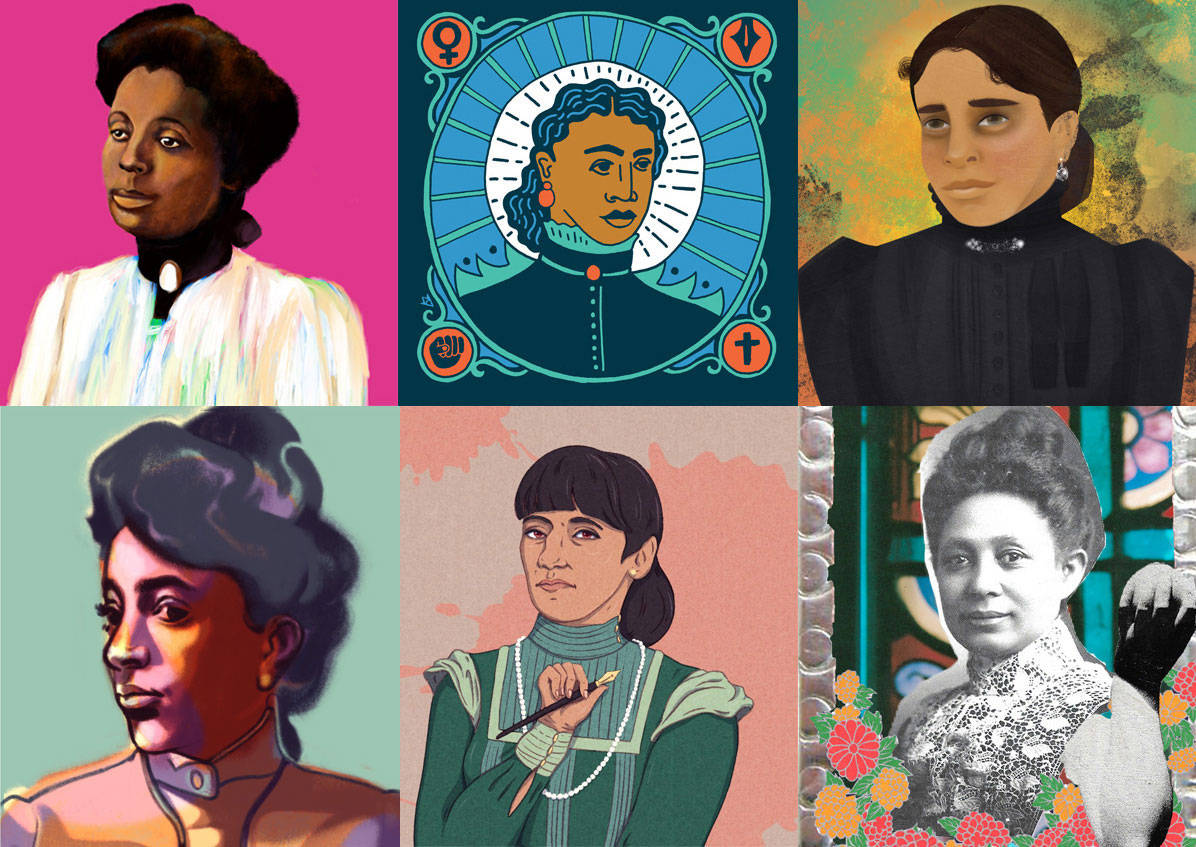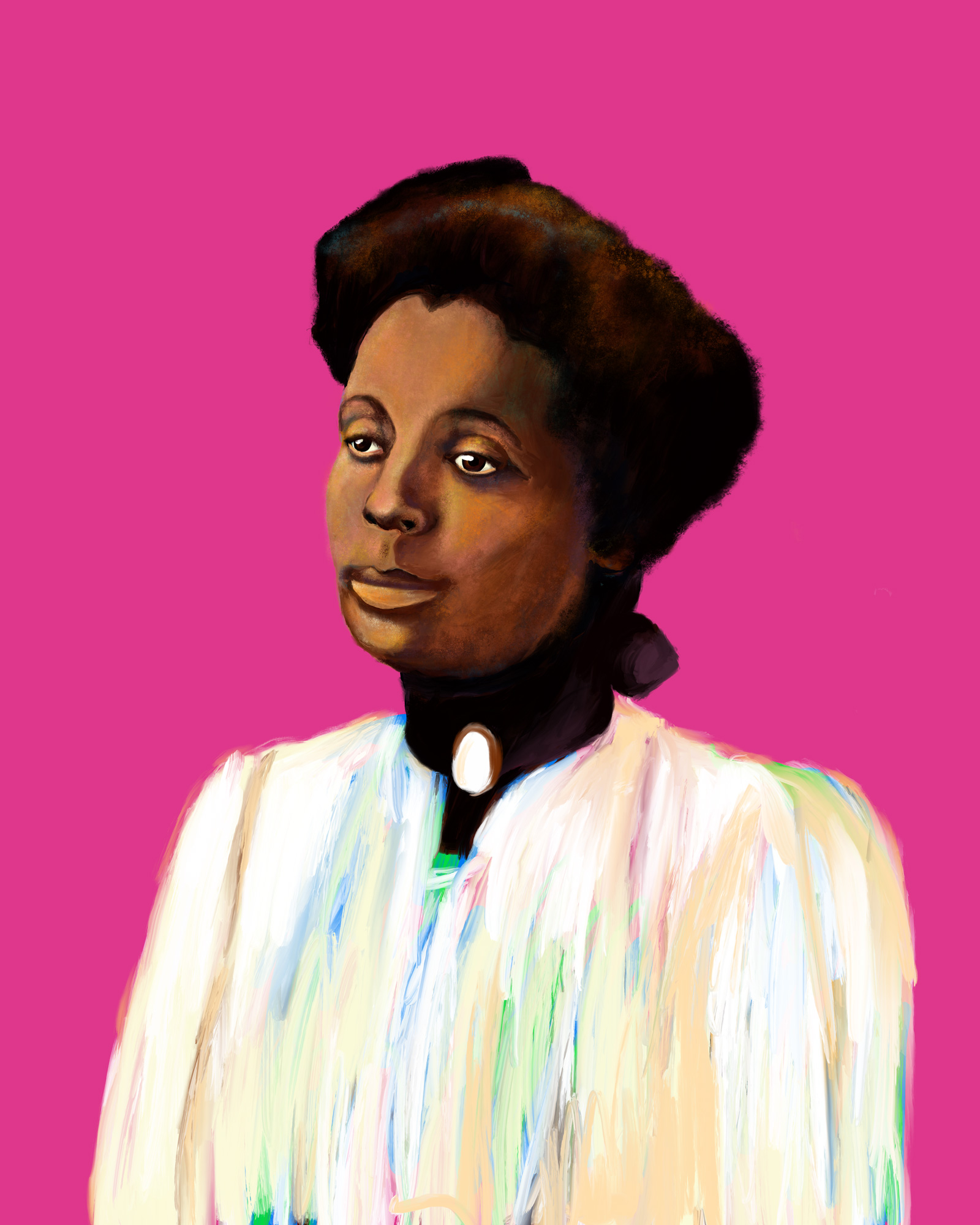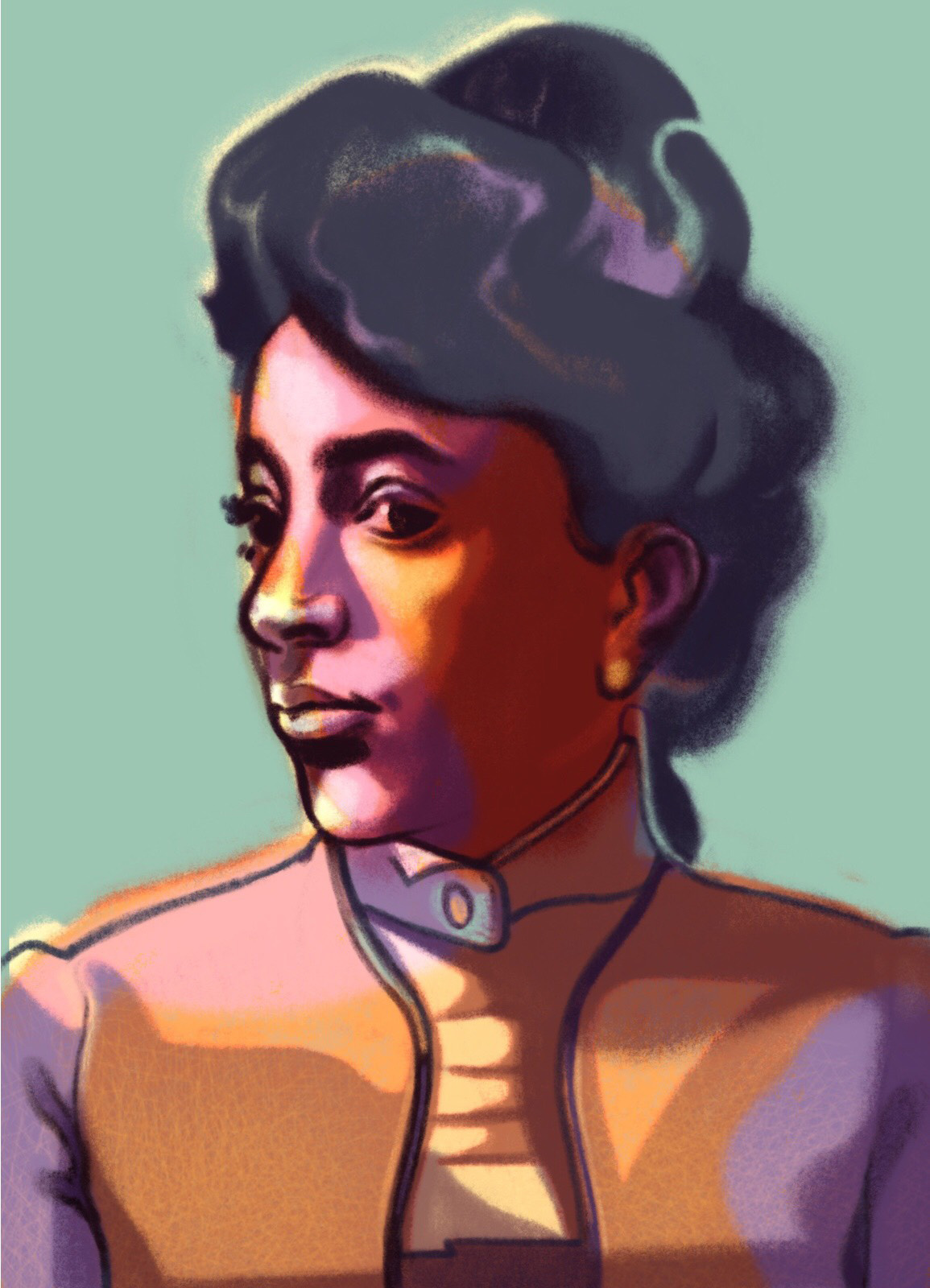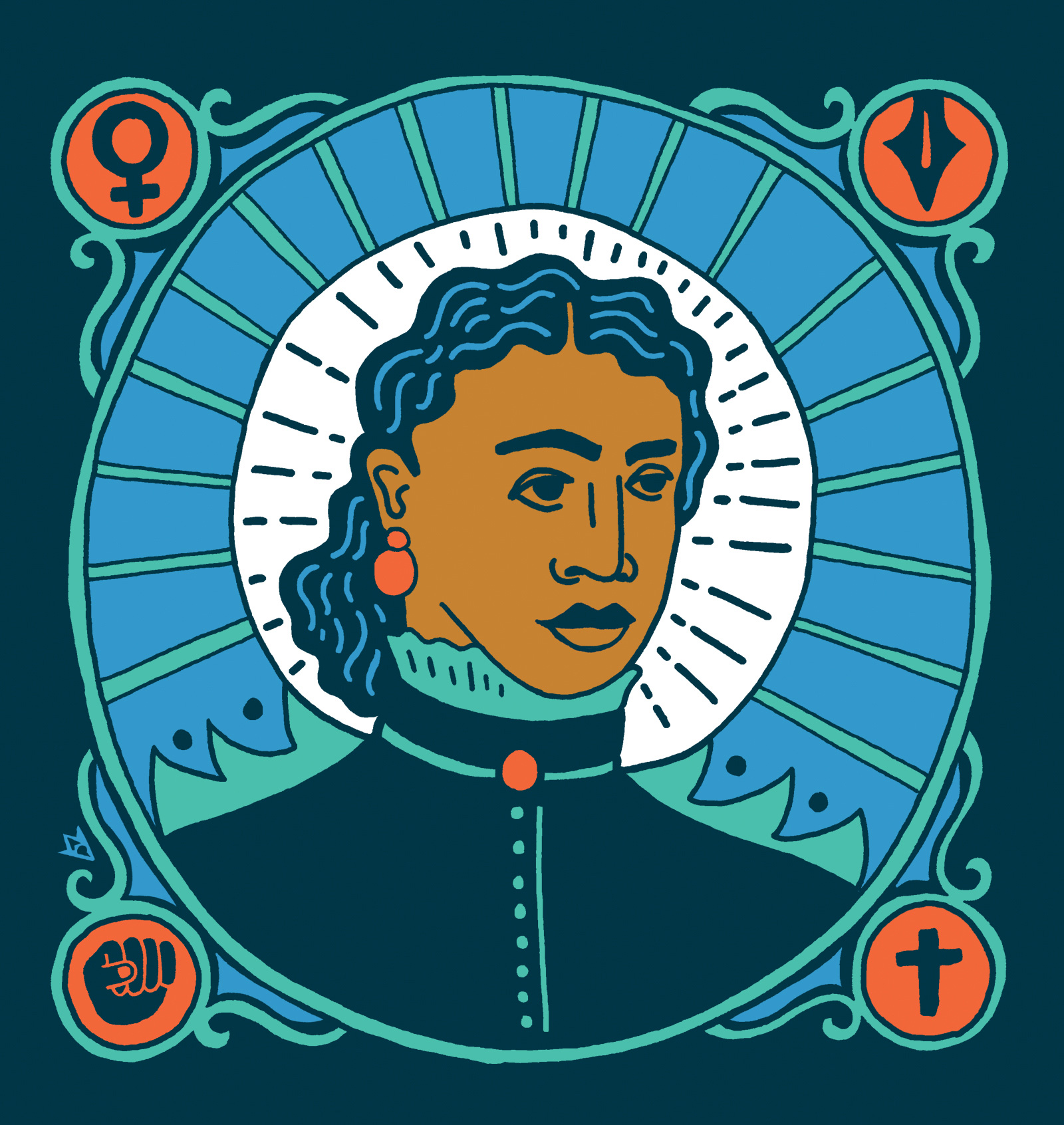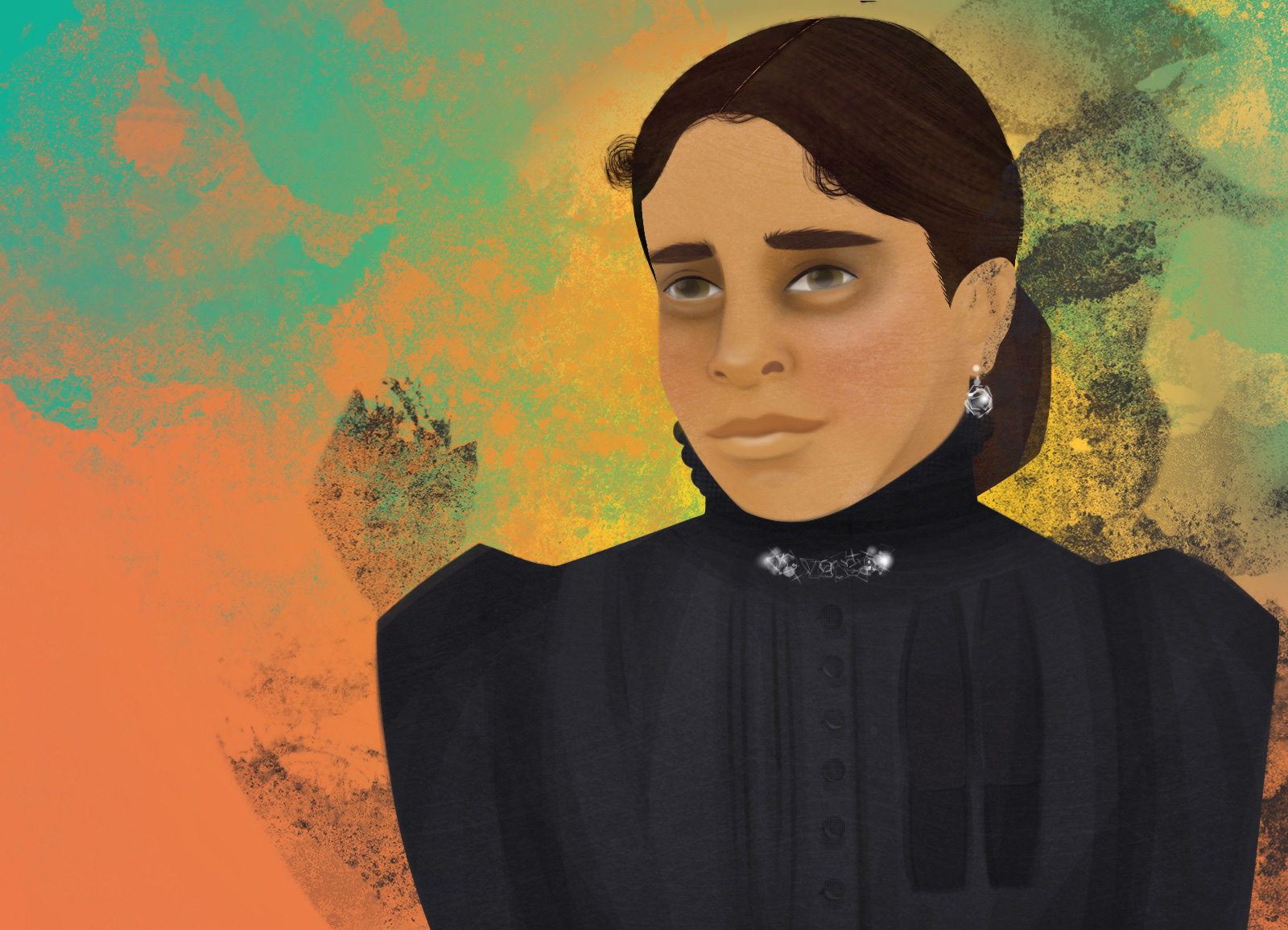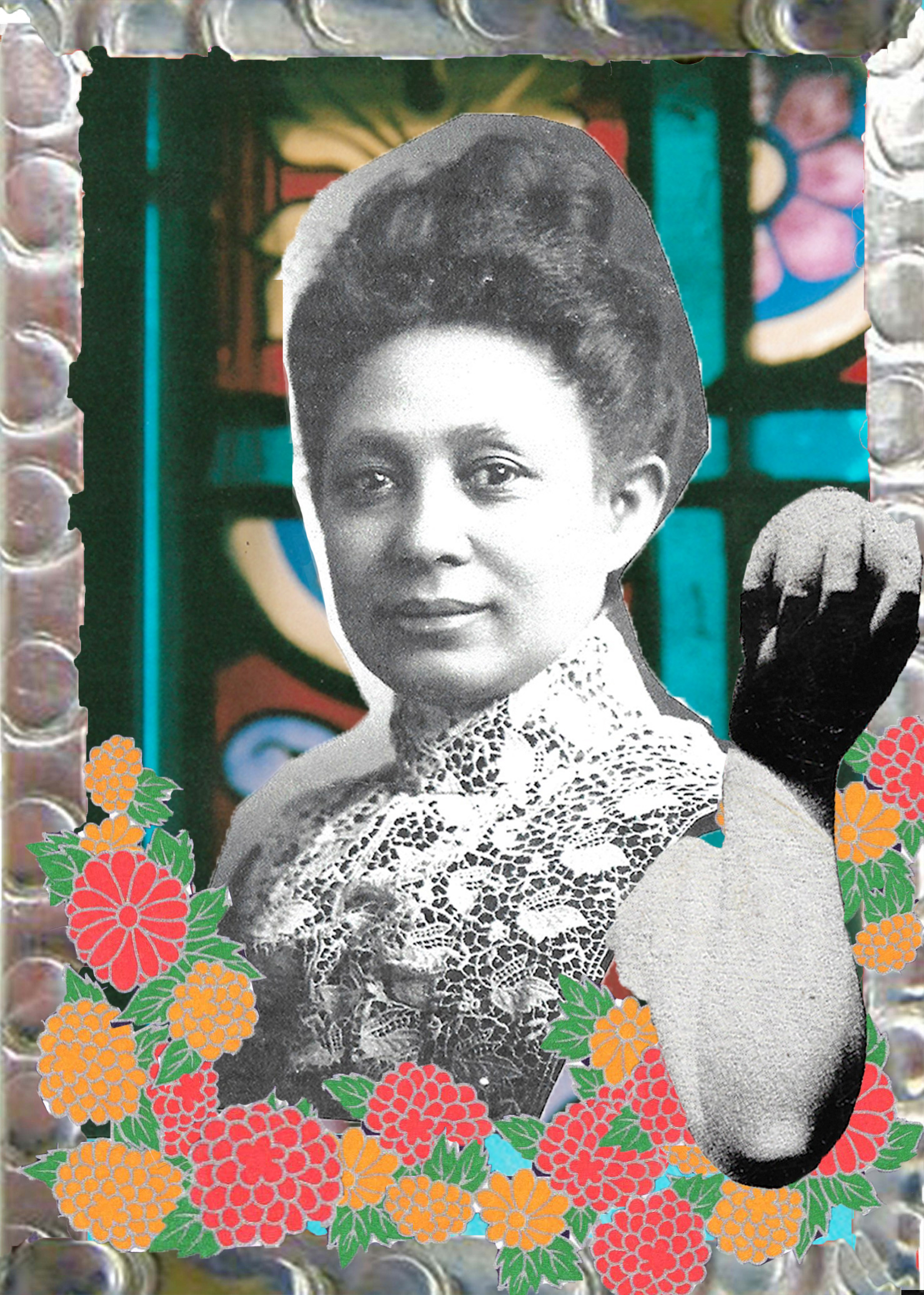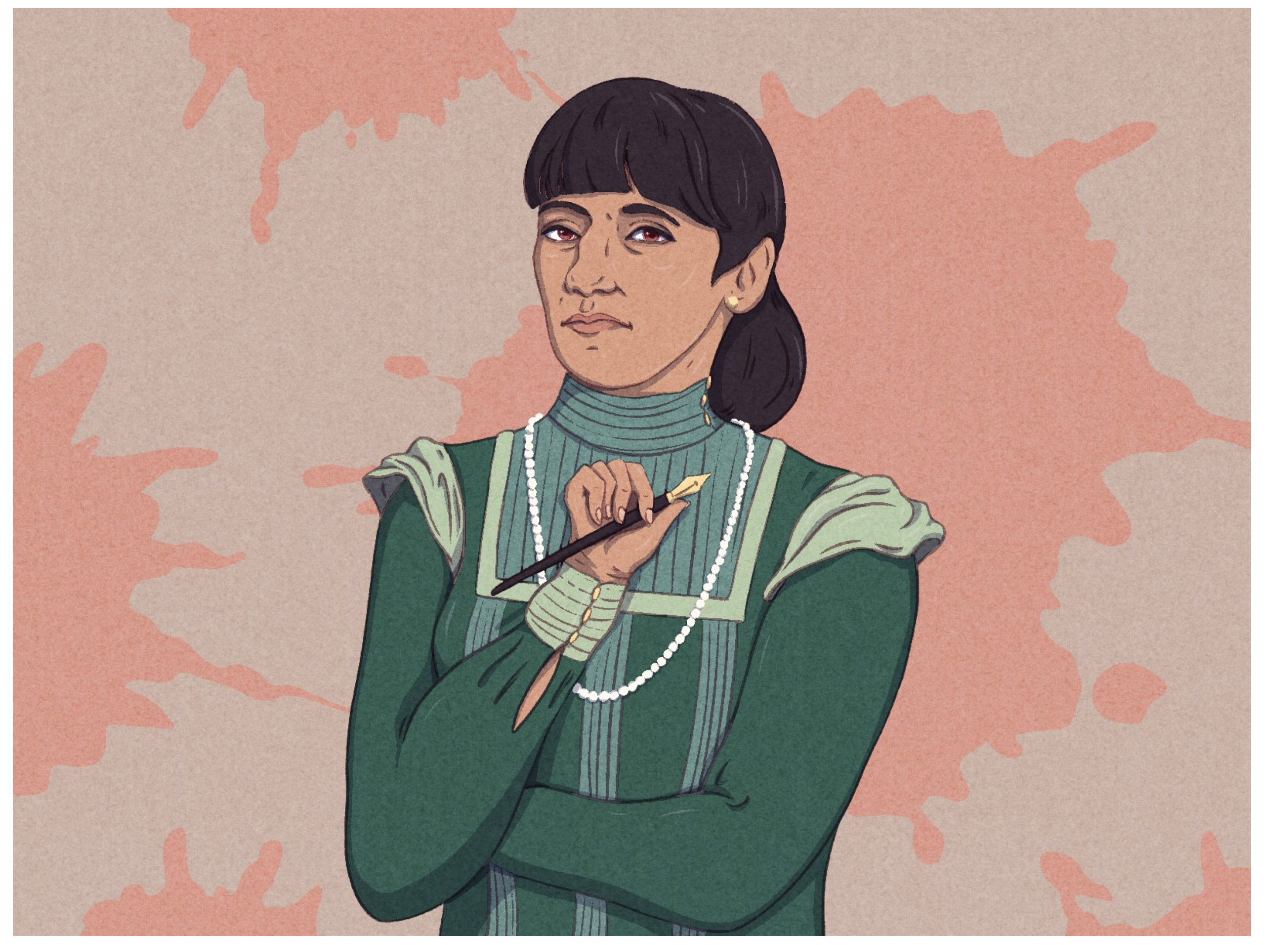How many black women journalists from the nineteenth century can you name? For many, the list starts and ends with Ida B. Wells, the pioneering newspaperwoman and activist whose anti-lynching crusade galvanized a movement. Wells was celebrated in her own lifetime, and for good reason—she inspired people on both sides of the Atlantic to pay attention to the atrocities inflicted on black Americans. But far from acting alone, she was part of a much larger network of black women journalists who dared to wield their pens in the names of truth and justice. At a time when all women were discouraged from engaging in “unladylike” activities like politics, the women of the black press were boldly writing about racial justice, gender equality, and political reform.
The African-American press of the nineteenth century was a lively, dynamic, insistently visible force for change. First emerging in 1827 with Freedom’s Journal, a New York–based newspaper founded by a group of free black men and edited by journalists Samuel Cornish and John Russworm, the initial pre-Emancipation black-owned papers not only railed against slavery and injustice but served as a vital source of community and education. They spread knowledge about current affairs, literature, and the arts, during a time when simply learning how to read and write in many parts of the country could get a black person killed. Countering the constant hatred leveled against black Americans by the mainstream press, and white America at-large, the publications provided a space for their readers to be truthfully, respectfully, seen.
This driving spirit of the black press only intensified after the end of slavery. The years that followed Emancipation ushered in a new frontier for black people, which included the opportunity to define who they were and what they aspired to become. This collective push forward was brutally met by Jim Crow laws, the rise of the Ku Klux Klan, and the steady weight of discrimination and disenfranchisement, which, together with the terror of lynchings, threatened to stifle and erode black advancement. In this roiling landscape of hopeful progress and violent backlash, the black press exploded. Alongside an increase in black literacy, by 1899 W. E. B. DuBois reported that there were over 150 dailies, weeklies, magazines, and journals across the country created by and for black people.
Crucial to many of these publications was the exceptional work of black women. These journalists were of the black elite and the working class, the free-born and the formerly enslaved. They were a mix of wives and mothers and widows, and women who never married at all. They were civic workers and religious leaders and educators—and many of them were active clubwomen.
The club movement began early in the nineteenth century, when black and white women formed groups in cities across the country to advocate for issues they were passionate about, such as suffrage, temperance, education, children’s welfare, and the abolition of slavery. For black women, these groups doubled as organized spaces to combat racial discrimination in their local communities and to advocate for greater equity in their lives and careers. In 1894, the club movement produced the first national newspaper published entirely by and for black women, The Woman’s Era, founded by Boston journalist and clubwoman Josephine St. Pierre Ruffin.
If they didn’t know one another directly, the women journalists working during the era of the black press’s proliferation at least knew, and often publicly admired, the others’ work—so interconnected were their worlds. These women were fighting against multiple systems—racism, sexism, an exclusionary white feminist movement—that were determined to keep them unseen and unheard. With their platforms, they were attempting to write themselves, and all black women across America, into undeniable visibility. Together with the leading women thinkers, leaders, and activists of the race, they offered black women powerful tools to advocate for themselves—and gave us language, ideas, and strategies for political engagement that we are still influenced by today.
And yet, their names are largely forgotten.
I started Race Women on Instagram as a way to celebrate pioneering black feminists too often buried by history—women who, as the name “race women” suggests, devoted their lives to furthering the freedom of the men and women of the race. (The term “race man” would become well known for describing black intellectuals and activists like W.E.B. Du Bois, but the women thinkers of the day also repurposed the title for their own use.) By investigating the past through archival research, I hope to contribute to the vital work of sharing this history in order to keep the legacies of our foremothers alive. It is chiefly through the sustained efforts of other black women—writers, scholars, librarians, educators, community leaders—that information about them is known at all. My work builds on the foundation they established.
Advertisement
The six journalists profiled here represent just a sample of the constellation of black women in the field who were making significant contributions during this critical time in American history. Gloria Wade-Gayles, a scholar of black women’s history, determined that between 1886 and 1905, nearly fifty black women journalists were reportedly working across the country. A handful had begun publishing even before this timeline, in the 1870s and earlier. Still, there is too little recognition of their bravery and hard work. One result of the historical canon’s neglect is that images of these women are largely nonexistent—or simply gone. Sometimes just one or two portraits remain. (Consider, by way of contrast, the records we have for figures like Susan B. Anthony and Elizabeth Cady Stanton, for whom a quick Google search generates several photographs from each stage in their lives.)
In an attempt to repair some of what’s been lost to time and prejudice, six different artists who celebrate black womanhood in their own work—Adriana Bellet, Andrea Pippins, Elise R. Peterson, Erin Robinson, Johnalynn Holland, and Xia Gordon—have created original portraits of the journalists described here, based on the images that are extant. These portraits, and the brief biographies that accompany them, honor the extraordinary lives these women led and serve to memorialize their legacies.
Lillian Parker Thomas Fox (1854–1917)
Lillian Parker Thomas Fox was born in Chicago in 1854, but soon after moved with her family to Oshkosh, Wisconsin. She spent her adolescence deep in books, in and outside the classroom, but by one account she was forced to end her education during her third year of high school, when she became engaged. Though many of her friends assumed that marriage would mark the end of her intellectual pursuits, Fox was undeterred. She began writing articles for the daily and weekly black press in Wisconsin, providing opinion pieces on events around town and the injustices plaguing the race on a national level.
Her first major article protested the repeal of the Civil Rights Act of 1875, which was the last piece of Reconstruction-era legislation guaranteeing black people equal rights by law. Addressing white America, Fox was not afraid to condemn the country’s hypocrisy: “You pity England with her Lords and Commons; Russia with its Czar and subject, and yet practically acknowledge that you have a people among you of American birth whom you consider by God created for your servants, your inferiors by nature rather than by condition.”
Fox continued to publish her sharp, incisive pieces in publications across the Midwest, supporting her writing career by working as a seamstress and a sought-after elocutionist. In 1885, she moved to Indianapolis, Indiana, and a few years later accepted a position at one of the city’s black newspapers, the nationally known Indianapolis Freeman. Fox was the only woman journalist on staff, and she created all of the special features columns in the paper, including one called “Race Gleanings.”
Like all race women, Fox believed that true freedom could come only with racial and gender equality—and she used her platform in print to advocate for both: “The feminine heart yearns for broader paths wherein to walk, an intellectual highway whereupon all nations or sex may walk abreast,” she declared in an article written circa 1893. As an active clubwoman, Fox started numerous women’s groups, both in Indianapolis and at the state level, including the Indiana Federation of Colored Women’s Clubs. She participated in various national women’s conventions, sharing stages with famous black feminist figures like the abolitionist, suffragist, and writer Frances Ellen Watkins Harper. On her way to one convention in Atlanta, in 1895, she was kicked off a train in the middle of the night for refusing to move to the “colored” section. She promptly sued the train company. But unlike the case of Ida B. Wells, who had also sued the railroad—and won—after being similarly ejected from a train a few years earlier, it’s unclear what happened with Fox’s suit; no legal records of it seem to have survived. But acts of defiance like hers and Wells’s created pathways for women like Claudette Colvin and Rosa Parks to follow decades later.
In 1900, two years after the death of her husband, Fox became the first black journalist to write regularly for a white-owned and -managed Indiana publication, the Indianapolis News. Although the newspaper never allowed her a byline in the fourteen years she worked there—she published anonymously—black journalists made sure people knew exactly which articles were hers, citing her work in their own papers. Fox was exuberantly praised by her people, described as “majestic” and “luminous”—a journalist who used her craft to direct “human thought forward.” For over twenty-five years she challenged American society with her work to think more expansively about what freedom and equality could look like.
Advertisement
In 2014, Lillian Parker Thomas Fox was inducted into the Indiana Journalism Hall of Fame.
Katherine Davis Chapman Tillman (1870–circa 1922)
Katherine Davis Chapman Tillman was born in Mound City, Illinois, a rural town at the southern tip of the state on the Ohio River. Tillman’s mother was a gifted teacher and taught her to read, but her parents struggled financially, and she didn’t have access to a formal education until the family moved to Yankton, South Dakota, when she was twelve years old. There, Tillman’s writing flourished.
She developed a love for poetry, publishing her first poem in the Christian Recorder newspaper at the age of eighteen, when she was still in high school. She continued publishing poems and essays throughout the black press, including in the Indianapolis Freeman, where Lillian Parker Thomas Fox was sure to have encountered—perhaps even nurtured—Tillman’s promising work. Many of her poems were frank social commentaries that confronted society’s egregious offenses. “And shall our people, long oppressed / By fierce, inhuman foe, / Not seek to have their wrongs redressed?” she asked in “A Question of Today,” published in the Freeman in 1889. “No! by their manhood, no!”
Tillman went on to attend Wilberforce University in Ohio, and State University in Kentucky, while continuing to circulate her writing. In addition to her newspaper work, throughout her career she also published several books of fiction, a volume of literary essays, as well as several biographies and plays. She used all of these forms as opportunities to promote racial pride and address concerns affecting black people, women in particular. In fact, black women were some of her most beloved muses. Tillman honored the work of Ida B. Wells in her poem “Lines to Ida B. Wells” (1894) and celebrated the suffragist and educator Anna H. Jones in her ode “My Queen” (1891).
In her essay “Afro-American Women and Their Work” (1895), Tillman extols the extraordinary accomplishments of black women since the end of slavery—many of whom, through incredible feats of perseverance, she described, survived the added savagery of sexual violence on top of slavery’s general horror. She fills the essay with the names of dozens of women from across the country who had achieved things the world never imagined they could: becoming businesswomen and land owners, school principals, sculptors, painters, musicians, writers, doctors. She celebrates high-society ladies in equal measure to working-class women, crediting domestic laborers especially for the fundamental contributions and sacrifices they made for the uplifting of the race: “It is owing to their liberality that we have many of the privileges we now enjoy.”
Tillman was just nineteen when she was featured, as a journalist on the rise, in Irvine Garland Penn’s Afro-American Press and Its Editors (1891), a book that extensively chronicled the history of the black press since its inception. She believed strongly in the power of the press to engender change, writing to Penn about the value of their shared profession: “I regard the press as one of the mightiest factors that move this universe of ours. So great is its influence, so powerful its results, I verily believe that if we, through any unseen force, should lose our free press, our republic would be shattered.”
Lucy Wilmot Smith (1861–1889)
In 1886, twenty-four-year-old Lucy Wilmot Smith stood before a mostly black male audience at the American National Baptist Convention and delivered a speech titled “The Future Colored Girl.” Whereas the typical Southern “colored girl” of the past had faced a narrow destiny of enslavement, domestic servitude, and subordinate, dependent positions in her household, Smith argued that black girls of the present, and the future women they would become, could and should demand more. Equality for Smith meant economic empowerment, a range of professional options, and the unwavering power to choose. “Give the girl the same freedom in exercising as the boy,” she argued, “the same liberty of wearing loose clothes, the same mental food and she will accomplish the same work.”
Smith was raised in Lexington, Kentucky, by her mother, Margaret, a widow who supported her seven children on her own as a domestic worker. With no male head of the household to rely on, Smith witnessed firsthand the struggles her mother endured to provide for her family as a single black woman living in the South with few economic choices. Though Census records suggest that Margaret did not know how to read or write, she took it upon herself to ensure that the “unusually bright” Smith was given every educational opportunity she had been denied.
At sixteen, Smith became a teacher, in large part to help support her family, and a few years later took over as principal of the junior teacher training school (called a model school) at Lexington’s State University. There, she encouraged the girls in her classroom to cultivate their ambitions and never doubt where their intelligence could take them. Only a few years older than her students, Smith led by example. While there, she paid for her sister’s schooling at the university, served as personal secretary to the school’s president—and started seeking bigger platforms to share her ideas.
By the mid-1880s, Smith was running the children’s and women’s section columns at two Baptist newspapers, and eventually joined the staff of the Baptist Journal. Like Katherine Tillman, Smith was also seen as a rising star within the black press. She used her editorial space to lay out practical strategies for how her people could ascend. She wrote articles about jobs women might pursue outside the realm of domestic labor; work children could do to earn their own money; the importance of voting in the larger scheme of black women’s independence. Over thirty years before women’s right to vote was granted, Smith wrote: “Our position is, that women should have the ballot, not as a matter of expediency, but as a matter of pure justice.”
Smith also became a member of the National Baptist Convention and its adjacent women’s educational convention. Religious organizations throughout civil rights history have produced vital pools of activists, commonly allying with secular movements to further a common cause—and Smith was one of the most vocal advocates for women’s rights within this male-dominated Baptist circle. She frequently gave lectures on the need for female leadership in the Church, offering examples of powerful women in world history and in the Bible as proof of their ability to take charge.
“To know her was but to admire her,” North Carolina activist and physician Lawson A. Scruggs wrote in Smith’s biographical sketch, featured in his book Women of Distinction: Remarkable in Works and Invincible in Character (1893). The portrait he paints is of an extremely hard-working, intelligent leader who put her passion for the elevation of women above all else.
In December 1889, at the age of just twenty-eight, Lucy Wilmot Smith died after a brief illness. Even toward the end, when the sickness was wearing her body down, “she talked of her future work for her sex.” That year, she published a series of articles in the New York Journalist celebrating her sister newspaper writers. She was also in the midst of penning a book called Women and Their Achievements, but she died before she could finish the manuscript. Smith had hoped to open a seminary devoted to girls’ education, and had begun studying medicine because she strongly believed that women’s mortality rates were as high as they were partly because they didn’t feel comfortable sharing their ailments with male doctors.
“What woman, who reads this sketch,” asked Scruggs, “will take up the work she so nobly began and make the most of it for the good of the race and humanity at large?”
Mary Virginia Cook-Parrish (1862–1945)
Mary Virginia Cook-Parrish was traveling through New England when she heard the news that her friend Lucy Wilmot Smith was sick. It was Cook-Parrish’s future husband, prominent pastor Charles Parrish, who finally convinced Smith to step away from her post at State University, and took her home to her mother to rest. “I waited to see Ms. Cook,” Smith was reported to have said, “but I must go now.” At Smith’s funeral, it was Cook-Parrish who gave the eulogy, lauding Smith’s work in the fight for the race, for women, that they’d waged together, side by side: “Her pen and voice always designated her position so clearly that no one need mistake her motive.” It was Cook-Parrish, too, who reportedly promised to finish Smith’s book on black women’s achievements—“if only the manuscript could be gotten.”
Although she wasn’t able to fulfill that promise, Mary Virginia Cook-Parrish was a living testament to black women’s limitless capacity to achieve. Born into slavery in Bowling Green, Kentucky, in 1862, she spent her early years post-Emancipation taking advantage of whatever schooling she could. Although educational opportunities were scarce, Cook-Parrish was determined, winning numerous spelling bees and reading contests, and eventually receiving the accolade of the city’s top student. In 1881, her reputation earned her a spot at State University, from which she graduated two years later as valedictorian. Upon graduation, she became a teacher, then principal, of the teacher training school there. And that was where she and Lucy Smith—also a principal, of the model school—likely forged their friendship.
Like Smith, Cook-Parrish also became involved in National Baptist Convention activities with the aim of disrupting the old ways to demand space for women to lead—both inside the Church and in their own lives. Equality for women in education and employment was the centerpiece of her advocacy. As vice-president of the Baptists’ women’s educational convention, Cook-Parrish steadily challenged male leadership on public stages, delivering pointed speeches with titles like “Woman: A Potent Factor in Public Reform.”
By 1886, she had taken her sharp commentary to the printed page, publishing articles in black papers across the country under the pen name “Grace Ermine.” Cook-Parrish wrote columns for several publications across the South, unabashedly focusing on racial injustice. “White faces seem to think it their heaven-born right to practice civil war on negroes, to the extent of blood-shed and death,” she wrote in an editorial for Our Women and Children magazine circa 1889. “They look upon the life of their brother in black as a bubble to be blown away at their pleasure… This outrage cannot endure. God still lives, and that which has been sown shall be reaped.”
In her work advocating for gender rights, Cook-Parrish carried forward the belief that she and Smith shared that there was a world of opportunity awaiting women if only they knew how to begin. The press, she saw, was a powerful tool of connection, and she encouraged other women to enter journalism as a way of amplifying the causes they cared about, creating a network of empowered, engaged black women. To her peers, Mary Virginia Cook-Parrish’s writing was a beacon, “shedding therefrom a gleam of light wherever found,” as journalist and civil rights activist Monroe Majors wrote at the time. “Marvelous indeed is it when we take into consideration the fact that such women are indeed living realities.”
Dr. Mary Ellen Britton (1855–1925)
When Mary Ellen Britton addressed the Eighth Annual State Association of Colored Teachers Convention in 1887, she started with a confession. The theme of her speech was women’s suffrage—a right, she admitted, she had not always believed in. Britton explained that the South she grew up in was not a place that condoned or supported equal rights for women. Human rights, not women’s rights, was the cause she’d always felt compelled to agitate for. Writing articles on racial injustice in local newspapers, Britton was labeled a “strong-minded” woman for her opinions, and, she said, “not knowing the import, I argued against the term.” But, she continued, this was no longer so: “I now throw away the old ignorant prejudices, which I am ashamed to have ever held, and stand here this evening, fearlessly, defending woman suffrage.”
Though raised in antebellum Kentucky, Mary Britton herself was born free. Her father was a free-born carpenter of Spanish and Native American descent, and her mother, though born into slavery, was freed by her mistress at sixteen and for years toured the country as a talented pianist. One of ten children, Britton enjoyed the privileges that her parents’ relatively comfortable status afforded the family, attending good schools and eventually enrolling at Berea College in 1871. But three years later, both of Britton’s parents died suddenly, within months of each other, and at the age of nineteen, she was forced to drop out of school and support herself.
Finding work as a teacher in the Lexington school system, Britton spent this next period of her life learning how to navigate a world that treated women—particularly black women—as a separate and decidedly unequal class within the labor force. A woman “suffers all the wrong and impositions of the working man,” she observed during her suffrage speech. “And the addition of a still greater injustice, that a woman shall receive less wages than a man for the same amount and quality of work, simply because she is a woman.” In pushing for equality, particularly through political reform, Britton realized that women could affect real change in their lives. Suffrage meant staking their claim to power, and gave them the right “to follow freely their natural gifts.”
Over the rest of her career, Britton amassed a reputation as a gifted teacher while continuing to publish articles in newspapers across the South. She also ran the Lexington Herald’s women’s column under the pen name “Meb.” “Many and varied have been her treatises on the race question,” wrote Monroe Majors in his sketch of her for his book Noted Negro Women: Their Triumphs and Activities (1893). “More than a dozen Negro journals have been forced onward toward the high mark, owing to the quality of her contributions. All Louisville is alive to the fact that within its borders there is one plucky woman and she is our Meb.”
Not satisfied with limiting her activism to the page, Britton often took her protesting to the streets. In 1892 she and a group of black women leaders traveled to the Kentucky capitol of Frankfurt to call on lawmakers to reject the Separate Coach Act, a bill that would require black and white Kentuckians to ride in separate and, of course, unequal train cars. Among the small delegation present to state their case was Mary Virginia Cook-Parrish.
The next year Britton traveled to Chicago for the 1893 World’s Fair to make a point about the country’s racial discrimination. Called “The White City” because many of the buildings were white, for black Americans—who were categorically denied participation in the Fair—the nickname was particularly apt. To test whether she would be admitted to her state’s showcase building, Britton subjected herself to the “humiliation, indignation and other strains” of being ejected, according to a reporter who saw the incident unfold. “Being asked if she had any reason to expect different treatment in the Kentucky building than she received in the city of her home, she said she wanted to see.”
In 1897, after more than twenty years as a journalist and educator, Britton decided to study medicine, recognizing—much as Lucy Wilmot Smith did—just how underserved her people were in health care. By that point, she had grieved the loss of several of her siblings—including her younger sister Hattie, who died at twenty-three by suicide—on top of the early deaths of her parents. In 1902, Mary Britton became the first black woman physician in Kentucky. A year into her practice, she built a home that would also double as her doctor’s office for the next twenty-two years, until she retired.
By then, Britton’s career had fully embodied her own closing remarks in that pivotal speech of 1887: “No movement of any great importance has ever taken place in the world, in which woman has not taken a prominent part as a worker.”
Victoria Earle Matthews (1861–1907)
Victoria Earle Matthews believed that the most crucial action black people could take in the fight for freedom was to write broadly, contributing to all genres and forms, and to preserve their own narratives. Race literature, as she called it in a 1895 speech titled “The Value of Race Literature,” held “potent possibilities.” It was the antidote to centuries of ignorance that insisted on the lie of black people’s inferiority. It could be a constantly replenishing source of racial pride, its mere existence a radical act of defiance in a country where “statutes were carefully, painstakingly prepared by the most advanced and learned American jurists to perpetuate ignorance.” Despite this, she declared, such laws “were powerless to keep all the race out from the Temple of Learning.” Flooding the landscape with black America’s intellectual contributions was the guiding spirit of her prolific journalism career.
Matthews was born into slavery in Fort Valley, Georgia, in 1861. After several attempts, her mother, Caroline, escaped North to set up a better life for her nine children. When she returned several years later to retrieve them, she found only four of those children still living, young Victoria among them. In 1869, the family moved first to Virginia, and later to New York City, when Matthews was twelve. She briefly attended school but soon left to look after a sick relative.
Matthews then started working as a domestic servant, picking up bits of learning however she could, mostly teaching herself. One of her white employers, noticing her eagerness, allowed Matthews to read whatever she wanted in their library after her day’s work was done. One can only speculate if it was in that space, surrounded by books she did not own, filled with stories that were not hers—some of which undoubtedly presented ugly depictions of her people she knew to be false—that Matthews’s passion for race literature started to emerge.
In 1879, at the age of eighteen, she married a coachman named William Matthews; a year later, they had a son, Lamartine. Balancing marriage and motherhood, Matthews began breaking into the world of journalism. Writing under the name “Victoria Earle,” she had soon published articles in more than twenty newspapers, magazines, and journals across the country, reporting for New York papers like the Times and the Herald, and writing for black newspapers such as the Richmond Planet, the Washington Bee, and the Cleveland Gazette.
Matthews became known as “a giantess” in the field—the “Queen Bee” of black women journalists who, according to The Woman’s Era newspaper, “has stirred our best women as no other woman has done.” In addition to her articles, she also produced works of fiction, short stories that described the inner lives of black women from all walks of life, and explored the complicated racial politics of colorism and passing—issues very much alive to Matthews as a light-skinned, straight-haired black woman.
Matthews, too, was deeply involved in the women’s club movement. In 1892, she and Brooklyn educator Maritcha Lyons hosted a benefit dinner for Ida B. Wells not long after the office of Wells’s Memphis newspaper, The Free Speech, was burned to the ground by a white mob in retaliation for her dogged reporting of lynchings. Shortly after the fundraiser, Matthews and Lyons formed the Women’s Loyal Union to support Wells’s anti-lynching efforts and other social justice issues. Matthews went on to become a founding member of the National Association of Colored Women in 1896, bringing her into contact with hundreds of women engaged in a united fight for gender and racial equality across the country—including Lillian Parker Thomas Fox.
The death of her son at sixteen sent Matthews into deep mourning. To channel her grief, she turned her attention to working in service of children. After discovering that young black girls from the South were being lured by shady Northern employment agencies and recruited into prostitution, she opened in 1897 an all-girls school in Harlem called the White Rose Mission. The mission stationed women agents in both the South and the North to ensure the girls received safe passage to the school. And there Matthews installed a library filled with books by black authors, arming the next generation with the powerful legacy they’d inherited.
“Our task is a conquest for a place for ourselves,” she’d said during that 1895 speech on the importance of race literature, delivered at the First National Conference of the Colored Women of America. Victoria Earle Matthews’s message to the crowd—an audience made up entirely of devoted race women—was clear: We tell these stories for our remembrance, and for our survival. If we fail, “not only will the sturdy pioneers who paved the way and laid the foundation of our Race Literature be robbed of their just due, but an irretrievable wrong will be inflicted upon the generations that shall come after us.”
Gratitude to Gloria Wade-Gayles, Evelyn Brooks Higginbotham, Darlene Clark Hine, Karen Cotton McDaniel, Claudia Tate, Shirley Wilson Logan, and Wilma L. Gibbs Moore, whose selected texts, linked to here, helped to deepen my understanding of the work and lives of these six incredible women.
This project was made possible through the support of the Eyebeam Center for the Future of Journalism.

